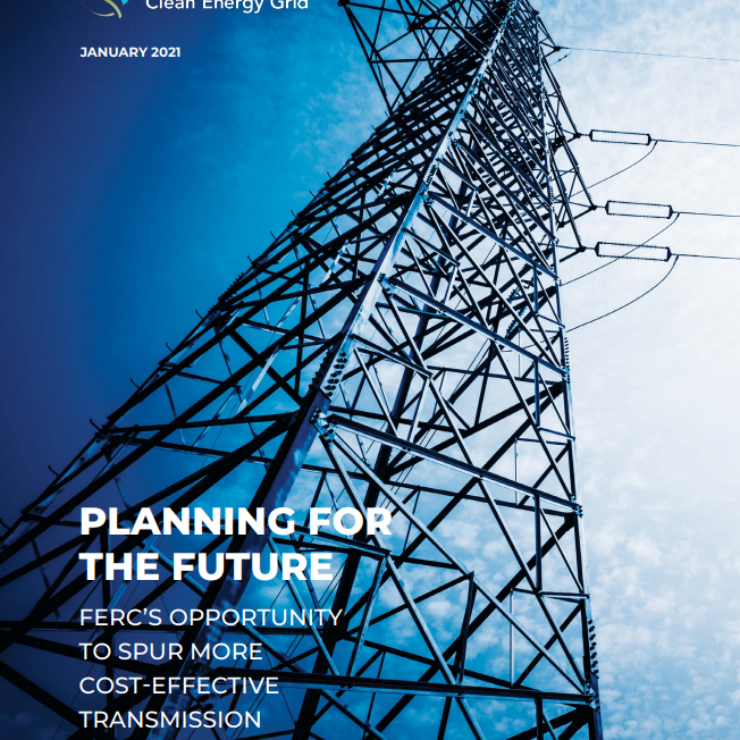team
Michael Goggin, Rob Gramlich, and Michael Skellysponsors
Americans for a Clean Energy Grid, with support from the Macro Grid Initiativepublished
April 2021Introduction
This report identifies 22 high-voltage transmission projects that could begin construction in the near term if more workable transmission policies are enacted. These shovel ready infrastructure projects can be a significant driver of domestic job creation and economic development across the country. We estimate that the transmission investment itself can create around 600,000 jobs, while the wind and solar deployment enabled by the lines would create an additional 640,000 jobs, bringing the total job creation benefit to around 1,240,000 jobs. As indicated in the map below, most of these lines are designed to access high quality wind and solar resource areas. We estimate that these 22 projects could interconnect around 60,000 MW of new renewable capacity, increasing America’s wind and solar generation by nearly 50% from current levels.
Aside from these job creation and economic development benefits, there are other compelling reasons why the power grid should be a primary focus of infrastructure policy. A report card from the American Society of Civil Engineers recently gave America’s power grid infrastructure a grade of C minus, noting that much of the grid is aging and congested. American consumers pay billions of dollars per year
in higher electric bills because transmission congestion limits their access to lower-cost sources of electricity. Moreover, a lack of strong transmission ties with neighboring power systems was a primary factor contributing to the Texas blackout event in February 2021, as well as other recent electric reliability events.
If completed, the projects identified in this paper would add around 8,000 miles and 42,000 MW of transfer capacity to America’s transmission system. For reference, the current U.S. transmission system contains 240,000 circuit miles of transmission that operate at 230 kiloVolts (kV) and above,4 so these new projects only add about 3% to the total mileage of the transmission system. However all of the proposed lines operate at a high voltage, which allows them to carry more power than typical existing transmission lines with lower losses. As a result, these lines increase the transmission system’s transfer capacity by about 11-12%, and enable a 50% increase in domestic wind and solar generation, as discussed below.
The lines are a mix of Alternating Current (AC) and Direct Current (DC), with DC generally used for lines that are longer or at least partially underground or underwater. These projects are shown in the following map and table, and described in more detail later.




